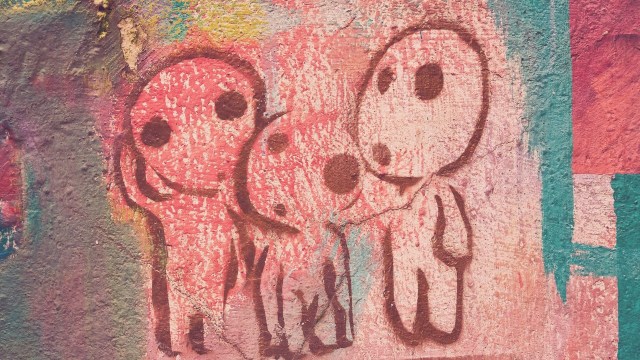Do religious men watch more pornography?

Photo by Lluis Gene / AFP via Getty Images
- A new study at the University of Southern Alabama investigates the pornography viewing habits of religious, heterosexual men.
- Those expressing high degrees of scrupulosity feel more guilt and shame when watching porn.
- The researchers found no correlation with viewing frequency and religiosity, however.
Pornhub is one of the most insightful data companies on the planet. Every year, the website releases a review that reveals the world’s sexual temperament. In 2019, an interesting statistic emerged regarding the United States: the top nine states viewing the longest (per visit) are all in the Bible Belt.
While it’s long been suggested that religious believers consume more pornography (alongside engaging in other solicitous acts), it’s difficult to gather reliable data. Pornography is not a topic of general discussion, especially in America. Our Puritanical mindset runs so deep that white supremacists and Holocaust deniers maintain social media handles while you risk getting banned if you show a female nipple.
A team of researchers—Nicholas Borgogna and Ryan McDermott at the University of Southern Alabama and Anthony Isacco at Chatham University—wanted to better understand the relationship between religiosity and problematic pornography in heterosexual men. Their study, published in Sexual Addiction & Compulsivity, sheds light on the psychology of these religious individuals.
What is problematic pornography? One longstanding notion involves the “orgasm gap.” A 2014 study notes men climax in 85 percent of sexual encounters; women, 63 percent. As most pornography focuses on male pleasure, this psychology seems to translate into actual bedrooms.
Study volunteers self-reported problems with their pornography usage. These include functional ailments: relationship issues, mental health problems, lack of emotional intimacy, sexism, and aggression. While Pornhub searches are skewed more toward anime pornography than violence, the latter is an ongoing issue in porn.
Porn Science: Female Sexual Response Is Contrary to Popular Belief, with Daniel Bergnerwww.youtube.com
There’s also disappointment. In 2017, I traveled to a pornography convention in Las Vegas to discuss the future of sex through the lens of virtual reality. Brian Shuster, founder of HoloGirlsVR, warned about the dangers of believing screens translate to real life. Speaking about teenage boys grappling with newfound sexuality, he says,
“The girls they find don’t look like the girls they see in videos. First sexual experiences are a disappointment on both sides; probably the first thousand sexual experiences people have are with their computer. They say, ‘I’m willing to have sex with real people, but I’m not willing to put in that level of work and commitment and potential disease and pregnancy for a relatively poor sexual experience.'”
This speaks to the problems. The team then wanted to know if religious men become addicted to violating moral codes—the old “I’m being naughty” mindset. They speculate religious men experience psychological distress from violating their faith’s ethics when viewing outlawed material. Borgogna and crew recruited 224 volunteers to measure nine self-reported items, such as perceived compulsivity, problematic access efforts, and emotional distress.
The team focused on three principles: scrupulosity, an obsessive-compulsive disorder centered on guilt or obsession around religious perfectionism; traditional masculine ideology; and self-compassion, or maintaining an “emotionally positive self-attitude.” Before reading responses, they hypothesized scrupulosity and masculine ideology would positively correlate to problematic pornography viewing (with the former providing a strong correlation) while volunteers with high self-compassion scores would not be ridden by guilt.

The reverend Vernon Mitchell talks to women at a strip club as part of a process to determine which segments of the show should be censored, London, 1st November 1960.Photo by Peter Dunne/Daily Express/Hulton Archive/Getty Images
They were partly right. Scrupulosity showed the highest correlation. Self-compassion did not negatively correlate, however. They guessed higher self-compassion, being the antithesis of the rigid, perfectionistic model of scrupulosity, would allow for self-forgiveness. “Unfortunately,” they conclude, “our data suggested the relationships to be non-significant.” Traditional masculine ideology did not correlate positively either.
Interestingly, Borgogna found general religiosity is not associated with viewing frequency. Being religious does not mean you view more pornography. Yet for a subset of religious believers there is increased distress. They believe religiosity could be a “protective factor” against viewing frequency for a certain segment of the religious population.
The team hopes therapists use this information as pornography addiction is an under-discussed topic in clinical settings. They advise mental health practitioners to focus on religious-based obsessive thoughts leading to scrupulosity, the constant impulse to access pornography, and cyclical feelings of guilt and shame.
They also note viewing frequency is not necessarily correlated to relationship or mental health problems. Even a little can trigger negative feelings and psychological distress in those suffering from scrupulosity, while many in the Bible Belt (and beyond) feel no shame, religious or not.
—
Stay in touch with Derek on Twitter, Facebook and Substack. His next book is “Hero’s Dose: The Case For Psychedelics in Ritual and Therapy.”





